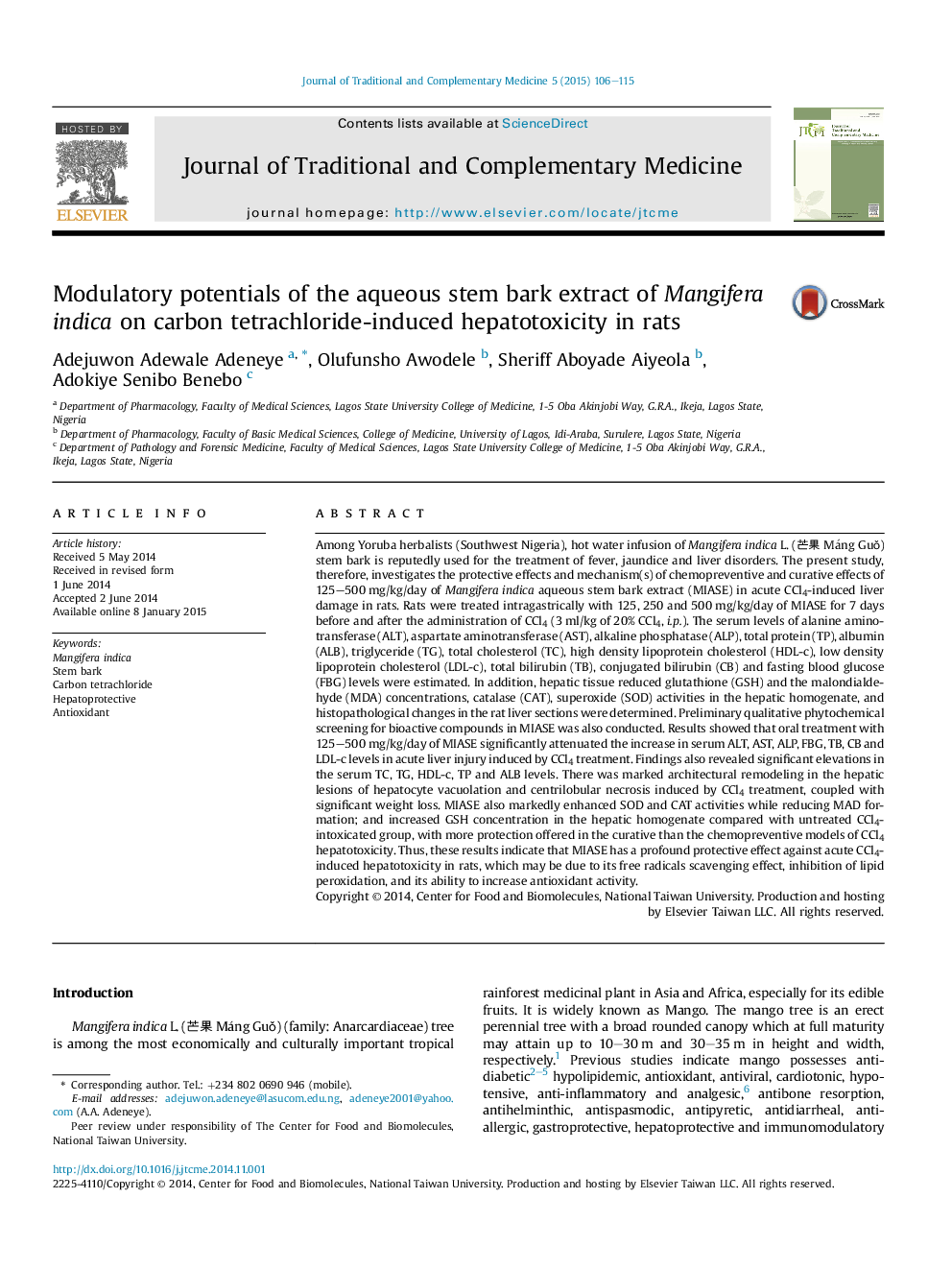| کد مقاله | کد نشریه | سال انتشار | مقاله انگلیسی | نسخه تمام متن |
|---|---|---|---|---|
| 3099820 | 1191135 | 2015 | 10 صفحه PDF | دانلود رایگان |

Among Yoruba herbalists (Southwest Nigeria), hot water infusion of Mangifera indica L. (芒果 Máng Guǒ) stem bark is reputedly used for the treatment of fever, jaundice and liver disorders. The present study, therefore, investigates the protective effects and mechanism(s) of chemopreventive and curative effects of 125–500 mg/kg/day of Mangifera indica aqueous stem bark extract (MIASE) in acute CCl4-induced liver damage in rats. Rats were treated intragastrically with 125, 250 and 500 mg/kg/day of MIASE for 7 days before and after the administration of CCl4 (3 ml/kg of 20% CCl4, i.p.). The serum levels of alanine aminotransferase (ALT), aspartate aminotransferase (AST), alkaline phosphatase (ALP), total protein (TP), albumin (ALB), triglyceride (TG), total cholesterol (TC), high density lipoprotein cholesterol (HDL-c), low density lipoprotein cholesterol (LDL-c), total bilirubin (TB), conjugated bilirubin (CB) and fasting blood glucose (FBG) levels were estimated. In addition, hepatic tissue reduced glutathione (GSH) and the malondialdehyde (MDA) concentrations, catalase (CAT), superoxide (SOD) activities in the hepatic homogenate, and histopathological changes in the rat liver sections were determined. Preliminary qualitative phytochemical screening for bioactive compounds in MIASE was also conducted. Results showed that oral treatment with 125–500 mg/kg/day of MIASE significantly attenuated the increase in serum ALT, AST, ALP, FBG, TB, CB and LDL-c levels in acute liver injury induced by CCl4 treatment. Findings also revealed significant elevations in the serum TC, TG, HDL-c, TP and ALB levels. There was marked architectural remodeling in the hepatic lesions of hepatocyte vacuolation and centrilobular necrosis induced by CCl4 treatment, coupled with significant weight loss. MIASE also markedly enhanced SOD and CAT activities while reducing MAD formation; and increased GSH concentration in the hepatic homogenate compared with untreated CCl4-intoxicated group, with more protection offered in the curative than the chemopreventive models of CCl4 hepatotoxicity. Thus, these results indicate that MIASE has a profound protective effect against acute CCl4-induced hepatotoxicity in rats, which may be due to its free radicals scavenging effect, inhibition of lipid peroxidation, and its ability to increase antioxidant activity.
Figure optionsDownload as PowerPoint slide
Journal: Journal of Traditional and Complementary Medicine - Volume 5, Issue 2, April 2015, Pages 106–115